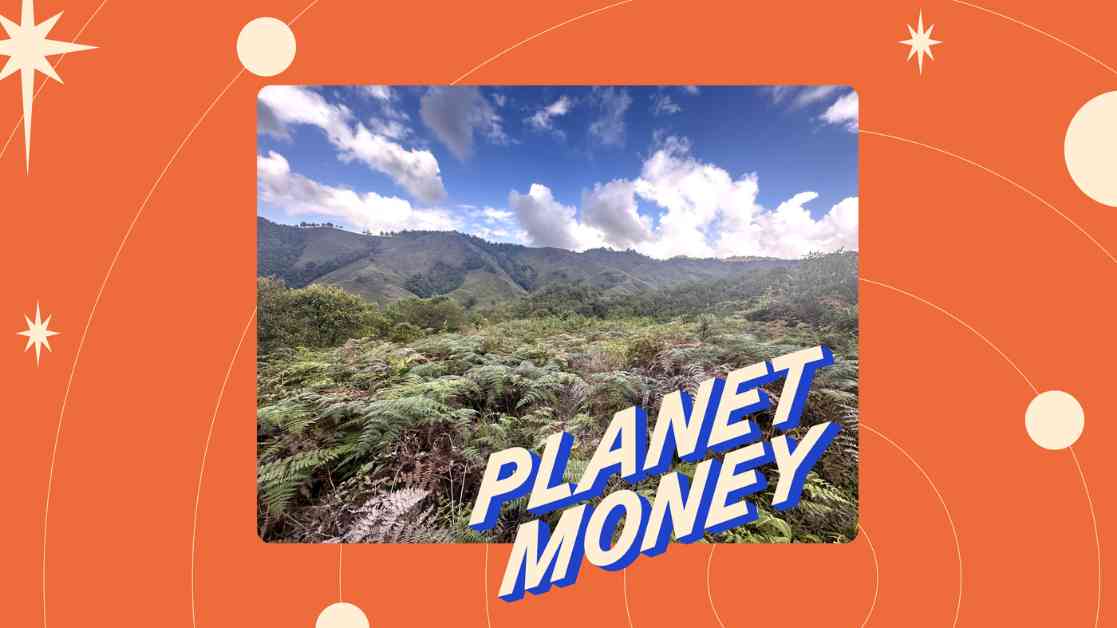The Role of Habitat Banking in Environmental Conservation: A Planet Money Special
Ferns are now thriving where once there were cattle pastures at the El Globo habitat bank and nature reserve in Antioquia, Colombia. This transformation is a testament to Mauricio Serna’s vision and determination to restore the land to its former glory. What was once a cattle ranch has now become a biodiverse cloud forest, offering a new lease on life for endangered species like the yellow-eared parrot, the tree ocelot, and the spectacled bear.
The Environmental Crisis at Hand
Our planet is facing a grave environmental crisis, with over a million species of plants and animals teetering on the brink of extinction. The primary culprit behind this alarming trend is the destruction of natural habitats by companies seeking resources for various industrial activities. This relentless pursuit of raw materials to meet consumer demands has pushed countless species to the edge of oblivion. Mauricio’s Vision for El Globo
During his time in college, Mauricio Serna recognized the potential of his family’s land, El Globo, to serve as a sanctuary for endangered wildlife. Despite its history as a cattle ranch, Mauricio saw an opportunity to restore the area to its former state as a cloud forest. His dream was to create a habitat where native animals could thrive once again, fostering biodiversity and ecological balance. The Rise of Biodiversity Credits
Mauricio’s journey led him to explore the concept of biodiversity credits, a novel financial instrument aimed at incentivizing conservation efforts. By turning El Globo into a habitat bank, Mauricio hoped to generate these credits and create a market for preserving biodiversity. But how do biodiversity credits actually work, and can they deliver on their promise to protect vulnerable species worldwide? Planet Money’s Investigation
In a special episode, Planet Money delves into Mauricio’s pioneering efforts to establish a market for biodiversity credits. Hosted by Stan Alcorn and Alexi Horowitz-Ghazi, the episode offers a behind-the-scenes look at the mechanisms driving this innovative approach to environmental conservation. With insights from experts and firsthand accounts, the episode explores the potential impact of biodiversity credits in safeguarding endangered species and habitats.
During his time in college, Mauricio Serna recognized the potential of his family’s land, El Globo, to serve as a sanctuary for endangered wildlife. Despite its history as a cattle ranch, Mauricio saw an opportunity to restore the area to its former state as a cloud forest. His dream was to create a habitat where native animals could thrive once again, fostering biodiversity and ecological balance.
The Rise of Biodiversity Credits
Mauricio’s journey led him to explore the concept of biodiversity credits, a novel financial instrument aimed at incentivizing conservation efforts. By turning El Globo into a habitat bank, Mauricio hoped to generate these credits and create a market for preserving biodiversity. But how do biodiversity credits actually work, and can they deliver on their promise to protect vulnerable species worldwide? Planet Money’s Investigation
In a special episode, Planet Money delves into Mauricio’s pioneering efforts to establish a market for biodiversity credits. Hosted by Stan Alcorn and Alexi Horowitz-Ghazi, the episode offers a behind-the-scenes look at the mechanisms driving this innovative approach to environmental conservation. With insights from experts and firsthand accounts, the episode explores the potential impact of biodiversity credits in safeguarding endangered species and habitats.
In a special episode, Planet Money delves into Mauricio’s pioneering efforts to establish a market for biodiversity credits. Hosted by Stan Alcorn and Alexi Horowitz-Ghazi, the episode offers a behind-the-scenes look at the mechanisms driving this innovative approach to environmental conservation. With insights from experts and firsthand accounts, the episode explores the potential impact of biodiversity credits in safeguarding endangered species and habitats.
As we navigate the complex landscape of environmental challenges, stories like Mauricio’s shed light on the power of individual initiatives in the fight against extinction. Through innovative solutions and collective action, we can work towards a sustainable future where nature and humanity thrive in harmony.
Remember, every small step towards conservation counts. What actions will you take today to protect our planet’s precious biodiversity?



















